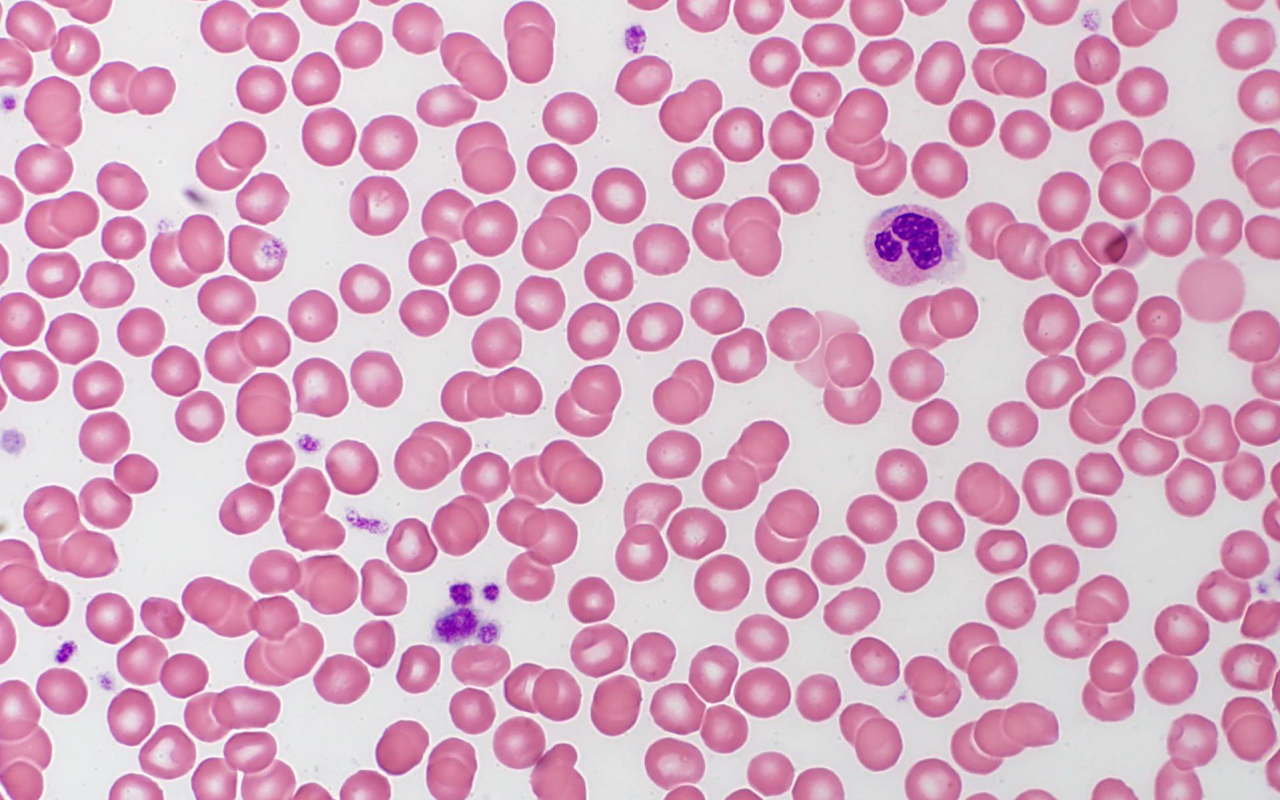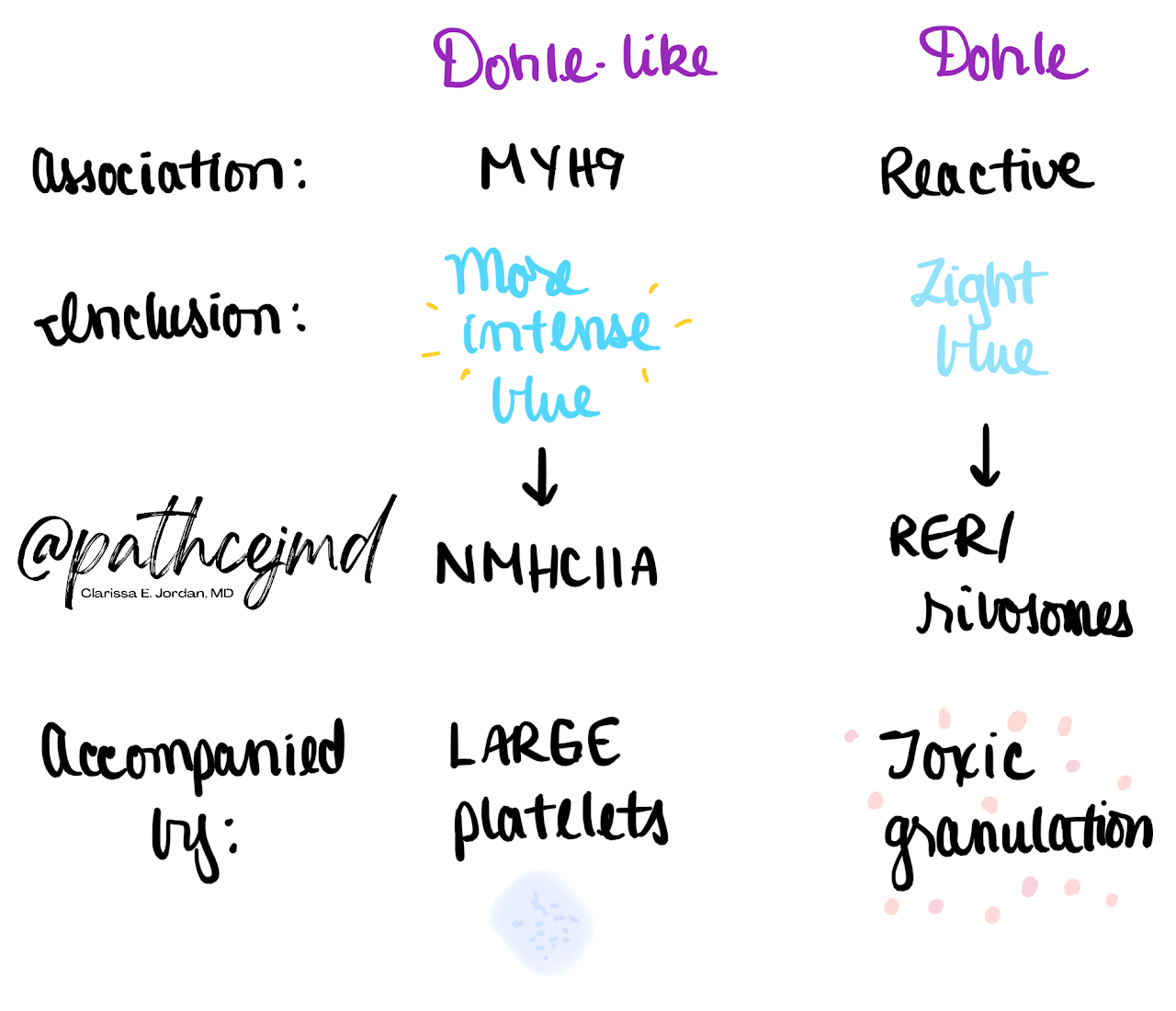Case 2: MYH9-related Disorder

This is an example of MYH9-related disorder
Historically, these disorders had distinct eponyms (e.g. May-Hegglin), but with much phenotypic and genotypic overlap, these are now classified as MYH9-related disorder.

MYH9-related disorders are associated with large platelets (and thrombocytopenia)
This one I found is large, but some platelets can even be larger than an RBC! 🩸
Besides the large platelets, the classic finding is Dohle-like bodies, which are light blue inclusions often found at the periphery of the cytoplasm in neutrophils
This inclusion is composed of aggregates of NMHCIIA, the myosin heavy chain ⛓ protein product of MYH9.
The inclusions in MYH9-related disorders are not true Dohle bodies. Let’s compare Dohle vs Dohle-like inclusions #PathDoodles

Thanks for following along! 🤗
Find this case on Twitter:
🩸#Hematopathology case #tweetorial 🧵
— Clarissa E. Jordan, MD (@pathcejmd) January 12, 2022
This patient has a mutation in which of the following genes? (Poll ⬇️)#HemePath #PathTwitter #MolecularPath #MedEd @MayoClinicPath
(P.S. I welcome any feedback on this or any of my Tweetorials!) pic.twitter.com/aKUvU9Chmm